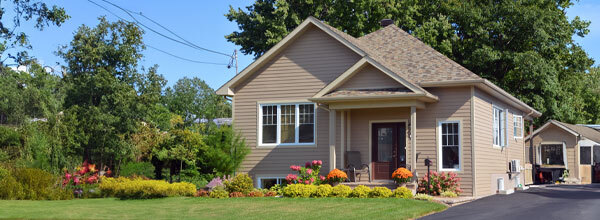Find the Perfect Solution
Old homes are beautiful, but they can require a lot of maintenance. If you’re looking to update or install a new HVAC system in an older home, there are some things to consider. With all the different options to choose from, picking an HVAC system for your older home can be overwhelming. The good news is there are plenty of options to choose from to select the right system for your home.
Common HVAC Challenges for Older homes
When installing or upgrading an HVAC system in an older home, preserving the building’s original features, fixtures and appearance can be challenging, especially in an historic building.
No pre-existing ductwork
In the 1960s and 1970s, homes were heated with wood fireplaces and radiators while the home cooling options were to open windows or turn on fans. Because of this, most older homes were built without ductwork, and most of them don’t have the space for ductwork that is used today. If your home doesn’t have ductwork, you can install it, which may require lowering ceilings or demolishing walls, but there are other options available that don’t require ductwork.
Limited Space
Older homes may not have the space to accommodate ductwork without lowering ceilings, which can raise the costs of your HVAC installation and could require more invasive construction procedures.
In addition to adding ducts, the equipment used can be large and can have specific requirements on where it should be placed in the home.
Other Considerations
If your home has uneven temperatures, drafty rooms or stuffy spaces, you may need to make insulation and air sealing upgrades in addition to installing the HVAC system. Your electrical system may also need an upgrade for handling the load of modern appliances.
HVAC Solutions for Older Homes
Variable Refrigerant Flow (VRF)
VRF systems are relatively new in the U.S. and are much like the conventional central air conditioning system that has an indoor air handler and an outdoor condenser. Instead of ductwork, it uses smaller indoor fan coil units throughout the home that are connected by refrigerant lines. They continually adjust the flow of the refrigerant to each indoor unit to provide heating or cooling. VRF systems can heat and cool different areas simultaneously and create temperature zones that you can control individually. One of the most innovative features of VRF systems is their heat recovery capabilities, which allow the system to transfer heat from areas that need cooling to areas that require heating. This improves the system’s overall efficiency, but since VRF systems are considerably more powerful and complex, they carry higher upfront costs. They are a great option if you want central air conditioning but want to keep your home’s existing structure.
High-Velocity
This system is made for smaller spaces that can’t support large ductwork. Instead, it uses small, flexible, insulated ducts that are only 2 inches in diameter, which can be passed through walls and ceilings without damaging the existing structure. The blower and coil unit are housed in a small box that can fit in small places. A standard air conditioner turns on and off depending on the temperature dictated by the thermostat. This requires the system to start up and waste energy to reach its maximum output of cooled air. High-velocity systems turn on and off according to the thermostat, without a drastic loss of pressure. In high-velocity systems, the air handler runs constantly, making sure your system doesn’t have to work as hard to maintain consistent airflow. High-velocity systems are great if you want central air conditioning without worrying about making space for large ductwork.
Ductless Mini-Splits
Mini-split systems are like furnace and air conditioner combinations; they have an indoor air handler and an outdoor condenser/compressor. They are connected through a small hole in the wall (about 3 inches wide) where the electrical and refrigerant lines pass. Typically, these units cool one or two rooms and are a budget friendly and flexible option. They are ideal for additions and renovations where you’re adding a room or two that need climate control, but don’t necessarily need to cover the entire home. Lennox provides many ductless mini-split solutions for old houses.
Modulating-Condensing Gas Boiler System
Old radiators can be upgraded to work with new, higher efficiency equipment, such as a new boiler. This system is often found in many historic homes. A pump circulates heated water through radiators and pipes before returning it to the boiler. The most efficient boilers are condensing boilers, which use secondary heat exchangers to capture more heat, making it more efficient.
How Can you Prepare for an Older Home HVAC Installation?
Before installing a new HVAC system, you should determine how the space will be used. Will it be your primary residence, a rental, or a commercial retail space? Will it be used every day or seasonally?
How to Choose an AC Solution
Space for installation: do you have space to install ductwork and equipment?
Budget: Cost varies significantly depending on the scope of work and the unit you choose
Central system or modular system: Do you prefer a centralized air system with a controlled thermostat in each zone, or having a separate zone in each room?
Energy efficiency: Some systems allow you to only heat or cool rooms you are using, which could save on your energy costs.
Keep in mind that adding a new HVAC system may create more problems, such as cracking of wood or finishes, metal corrosion, rot, or paint blistering, etc., so choosing the right option for your home is key.
Discover HVAC options for old houses at Lennox.com. Explore our range of heating and cooling solutions to find the perfect fit for your older home. Book an appointment with your local Lennox Dealer for more information.

